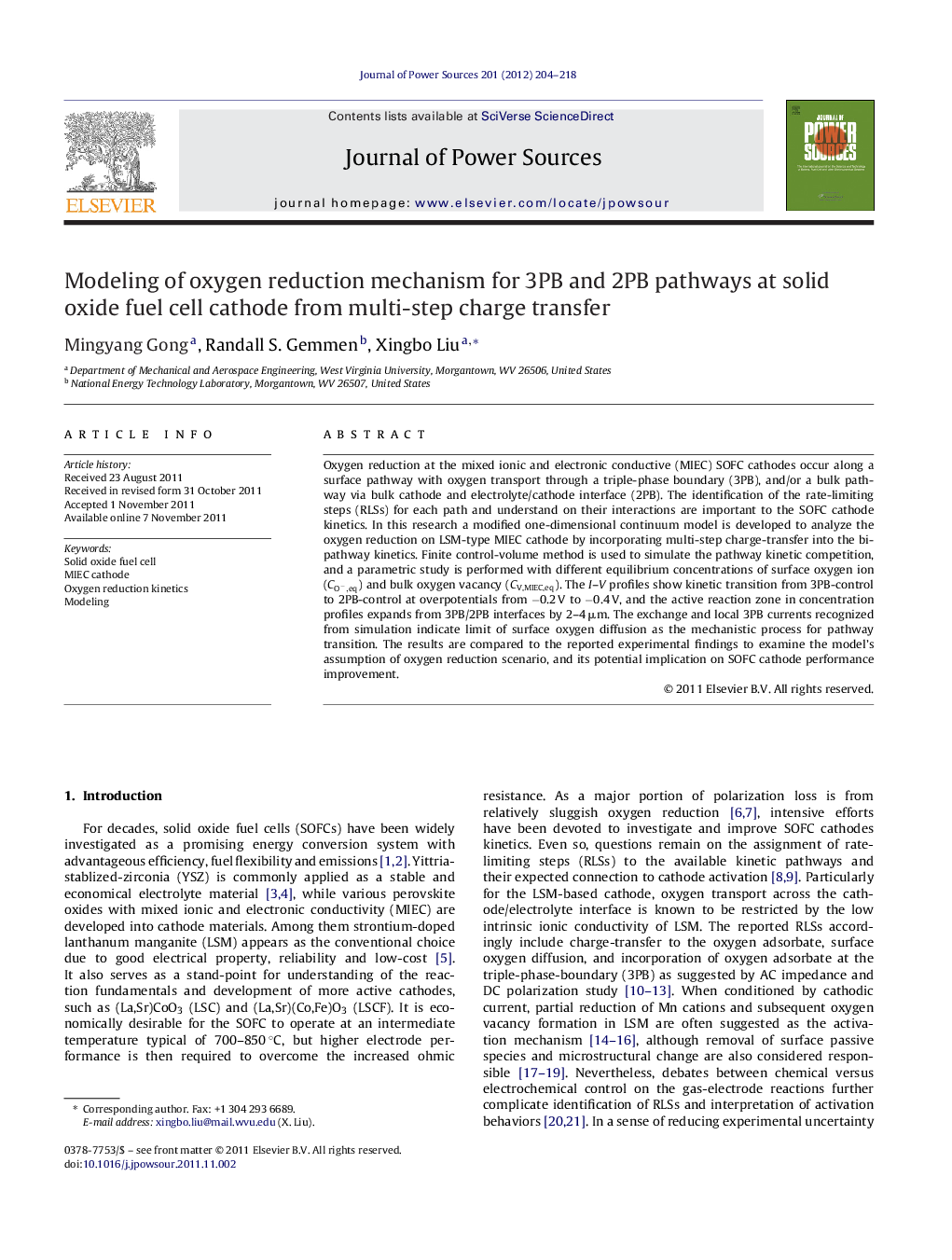| Article ID | Journal | Published Year | Pages | File Type |
|---|---|---|---|---|
| 1293192 | Journal of Power Sources | 2012 | 15 Pages |
Oxygen reduction at the mixed ionic and electronic conductive (MIEC) SOFC cathodes occur along a surface pathway with oxygen transport through a triple-phase boundary (3PB), and/or a bulk pathway via bulk cathode and electrolyte/cathode interface (2PB). The identification of the rate-limiting steps (RLSs) for each path and understand on their interactions are important to the SOFC cathode kinetics. In this research a modified one-dimensional continuum model is developed to analyze the oxygen reduction on LSM-type MIEC cathode by incorporating multi-step charge-transfer into the bi-pathway kinetics. Finite control-volume method is used to simulate the pathway kinetic competition, and a parametric study is performed with different equilibrium concentrations of surface oxygen ion (CO−,eqCO−,eq) and bulk oxygen vacancy (CV,MIEC,eq). The I–V profiles show kinetic transition from 3PB-control to 2PB-control at overpotentials from −0.2 V to −0.4 V, and the active reaction zone in concentration profiles expands from 3PB/2PB interfaces by 2–4 μm. The exchange and local 3PB currents recognized from simulation indicate limit of surface oxygen diffusion as the mechanistic process for pathway transition. The results are compared to the reported experimental findings to examine the model's assumption of oxygen reduction scenario, and its potential implication on SOFC cathode performance improvement.
► 1-D model to for ORR of cathode by incorporating multi-step charge-transfer into the bi-pathway. ► It addresses kinetics of surface O− production and its incorporation into the MIEC cathode. ► Extension of active area & transition from 3PB- to 2PB-control occurs at certain overpotential.
